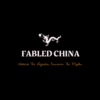There are different versions of how Chiyou met his end. One version claims that he was slain by the goddess with a saw-shaped sword, while another legend suggests that Chiyou was first captured alive by the Yellow Emperor and then executed.
After the Battle of Zhuolu, where Chiyou’s forces were defeated, Chiyou was captured by the Yellow Emperor’s army. As the main culprit of so much destruction, the Yellow Emperor could not afford to show mercy. Chiyou, with his iron head and bronze-like skin, was incredibly fierce, so the Yellow Emperor ordered that he be bound in shackles and dragged to the desolate plains of Zhuolu to be executed.
Once Chiyou was completely killed, the shackles that had bound him were removed, but they were stained red with his blood. These blood-soaked shackles were thrown onto Song Mountain, where they transformed into a dense forest of maple trees. The leaves of the trees turned bright red, resembling the bloodstains from Chiyou’s body. In this forest, a particular type of red snake, known as the Yushen (育蛇), took on the role of guarding the trees.
The exact place where Chiyou was executed is called “Jie” (解), and it is said that the blood drops from Chiyou’s body turned into a pool of crimson water. The color of the water mirrored the deep red of his blood, which led people to call the place “Da Yan Chi” (大盐池), or “Chiyou’s Blood.” This location became a symbol of Chiyou’s violent death.
After Chiyou’s head was severed from his body, the Yellow Emperor had two separate tombs constructed for the different parts of his body to prevent his spirit from causing trouble after death. These tombs are said to be located in present-day Shouzhang County and Juye County in Shandong. During the month of October, people would hold sacrificial rites at Chiyou’s tombs. Legend has it that on these occasions, red clouds would rise from the tombs, reaching the heavens, as if a crimson banner were being unfurled across the sky. This phenomenon was called the “Chiyou Flag,” and some believed it represented Chiyou’s lingering resentment and unrepentant spirit.
To use Chiyou’s fate as a warning to others who might seek power without regard for the well-being of the people, the Yellow Emperor ordered that Chiyou’s face be carved onto a bronze cauldron. When the craftsmen began their work, they incorporated elements from the wilds of the southwestern region, combining the appearance of a creature that was part human, part goat, part pig, with an enormous mouth, eyes under its armpits, tiger-like teeth, and human claws. This creature was known for its insatiable greed and cruelty, hoarding money but unwilling to spend it, never working but stealing the fruits of others’ labor, and eating anything in sight until it eventually died from overeating. The resemblance to Chiyou, who had only his head remaining after his death, was clear, so the craftsmen exaggerated the features of this creature, blending it with Chiyou’s image to create a grotesque figure symbolizing greed and violence.
This creature, which was carved onto the cauldron, came to be known as taotie (饕餮). The taotie’s head, however, was not adorned with the transparent sharp horns of Chiyou but instead had two fleshy wings, further differentiating the creature from Chiyou but still representing the same qualities of insatiable hunger and destructive power.
Through this image, the Yellow Emperor aimed to remind future generations of the dangers of unchecked ambition and greed, ensuring that Chiyou’s legacy would live on as a cautionary tale.
